EdgeCore Version: 4.3.6.
Overview
To have multiple edgeCore instances running from a shared configuration database (Oracle or MySQL), both the configuration database and the authentication database will need to be shared.
The following will be automatically updated:
- the pipeline view
However, if users are in a wizard (e.g. two users are editing the same node), there is no indication that the wizard has been modified. As a result, it is possible for users to override each other’s changes. - connections
- constraints
- client filters
- rule sets
- color palettes
- map layers
- provisioning
Changes to pages will not be seen until the page is reloaded, so active users will be prompted to reload the browser in order to have the latest configuration.
Examples
Example 1: Adding/cloning/deleting pages
If you add/clone/delete a page on one instance, all other instances will automatically be updated, that is, the page will also be added/cloned/deleted on other instances.
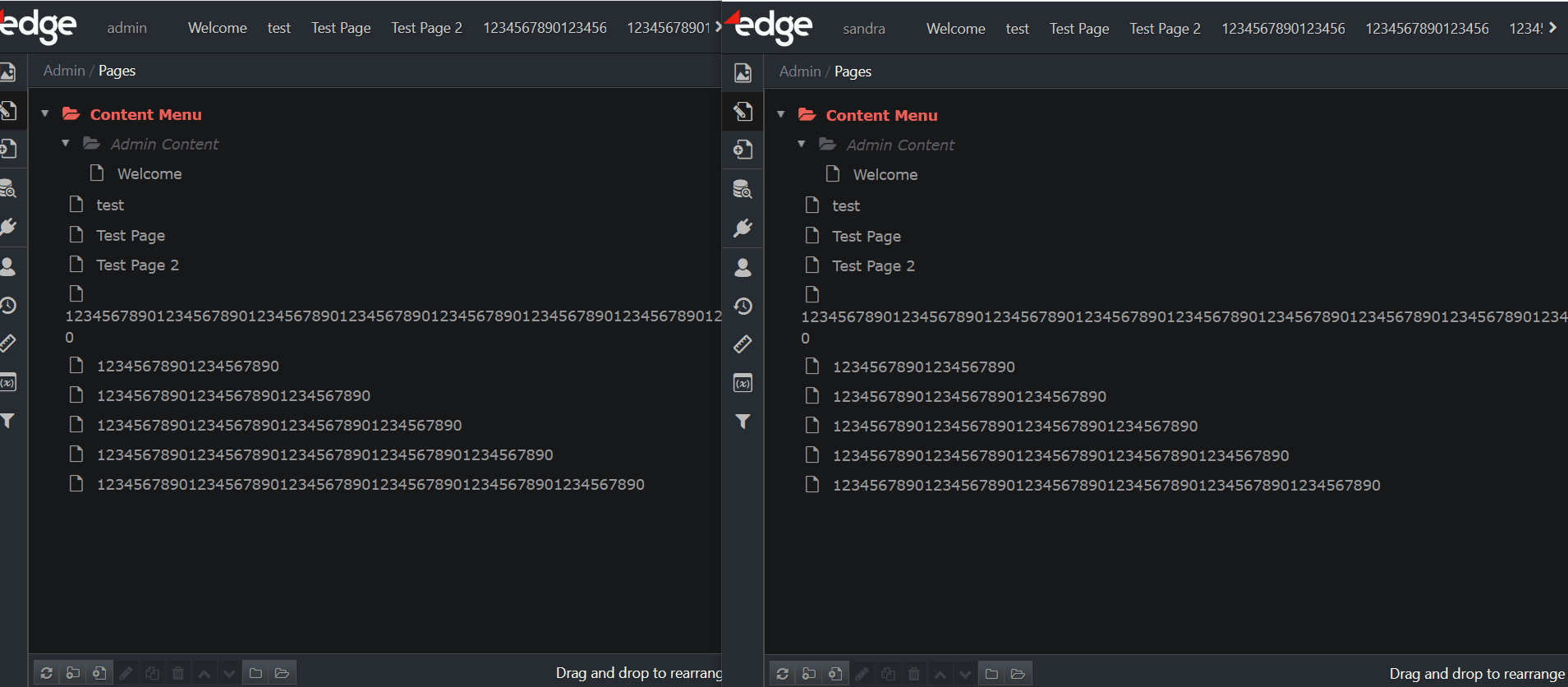
Example 2: Editing pages
You and another user (using a different instance) are on the same page containing a visualization. You enter the edit mode to make changes to the visualization, for example, you want to add another visualization to the bottom. Once you save the page, a banner will be displayed to the other user, prompting the user to reload the browser in order to have the latest configuration.

Example 3: Adding/editing/cloning/deleting client filters
If you add/edit/clone/delete a client filter on one instance, all other instances will automatically be updated, that is, the client filter will also be added/edited/cloned/deleted on other instances.
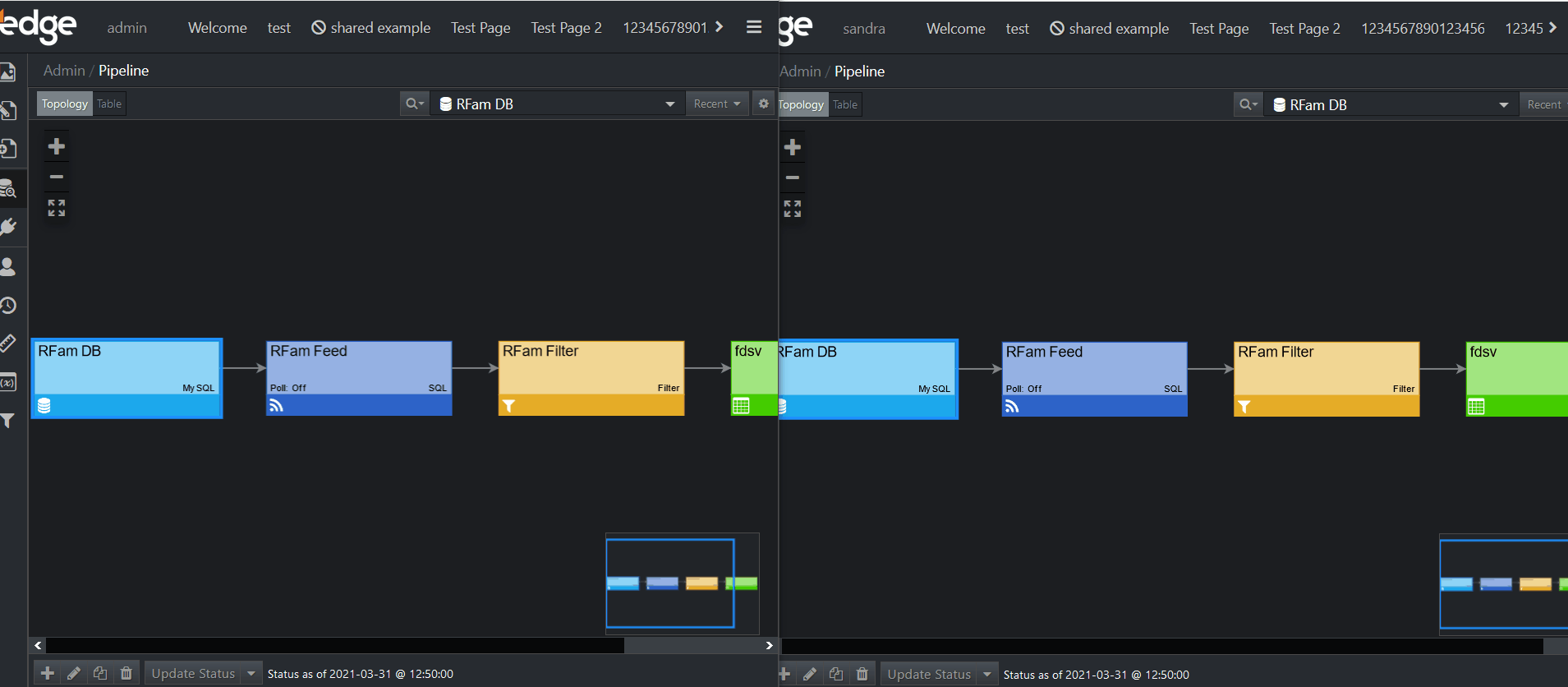
Example 4: Adding/editing/cloning/deleting constraints
If you add/edit/clone/delete a constraint on one instance, all other instances will automatically be updated, that is, the constraint will also be added/edited/cloned/deleted on other instances.
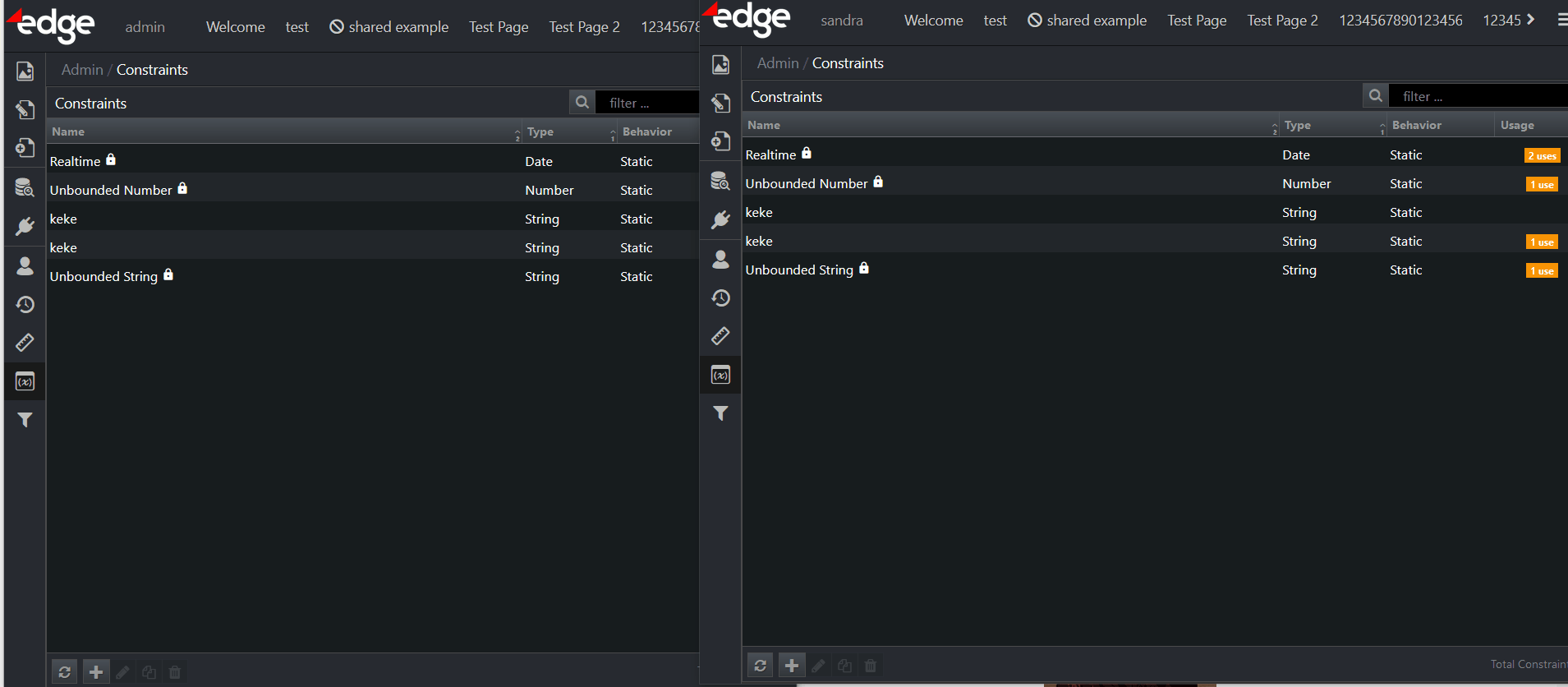
Example 5: Adding/editing/cloning/deleting rule sets
If you add/edit/clone/delete a rule set on one instance, all other instances will automatically be updated, that is, the rule set will also be added/edited/cloned/deleted on other instances.

Example 6: Adding/editing/cloning/deleting color palettes
If you add/edit/clone/delete a color palette on one instance, all other instances will automatically be updated, that is, the color palette will also be added/edited/cloned/deleted on other instances.
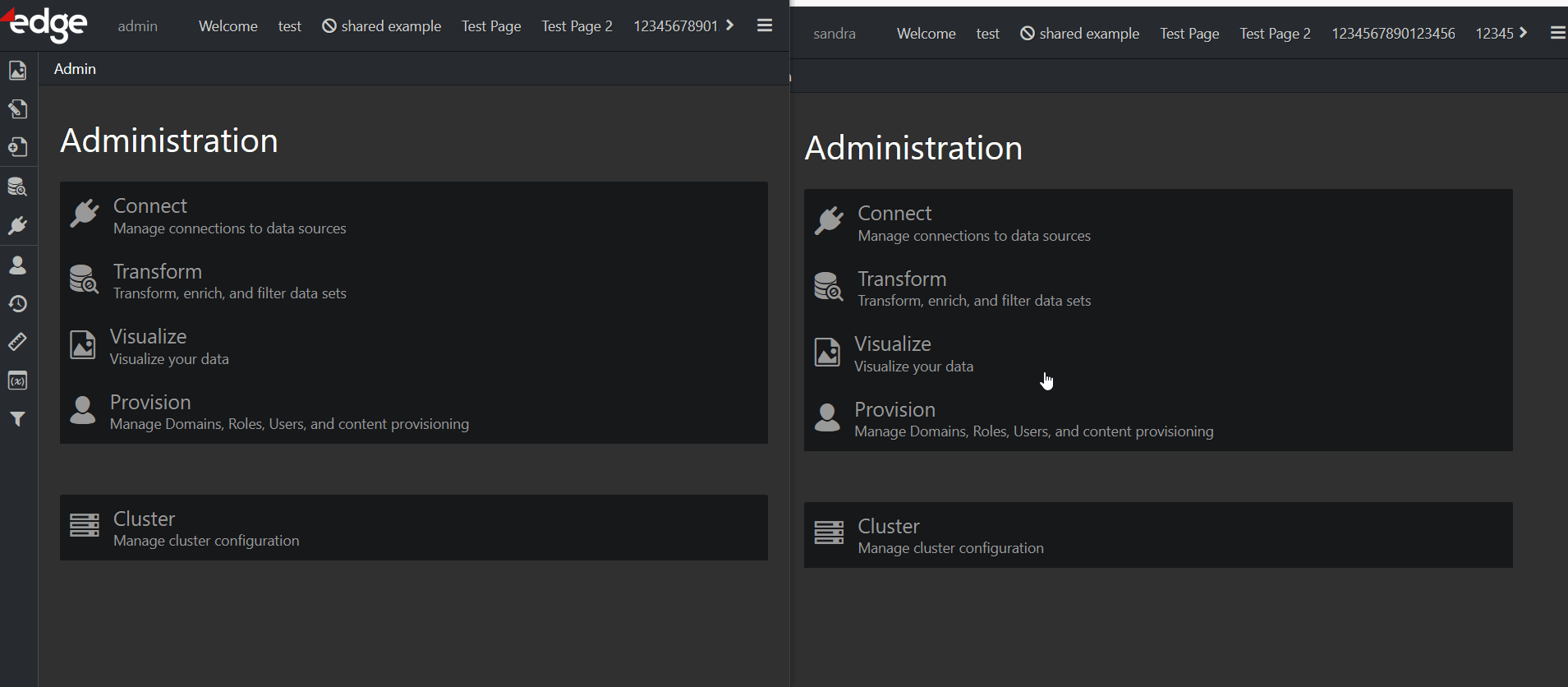
Example 7: Adding/editing/cloning/deleting map layers
If you add/edit/clone/delete a map layer on one instance, all other instances will automatically be updated, that is, the map layer will also be added/edited/cloned/deleted on other instances.

Example 8: Provisioning
If you add/edit/clone/delete a user, domain, and/or a role on one instance, all other instances will automatically be updated, that is, the user/domain/role will also be added/edited/cloned/deleted on other instances. The same applies to assigning content and permissions to roles.
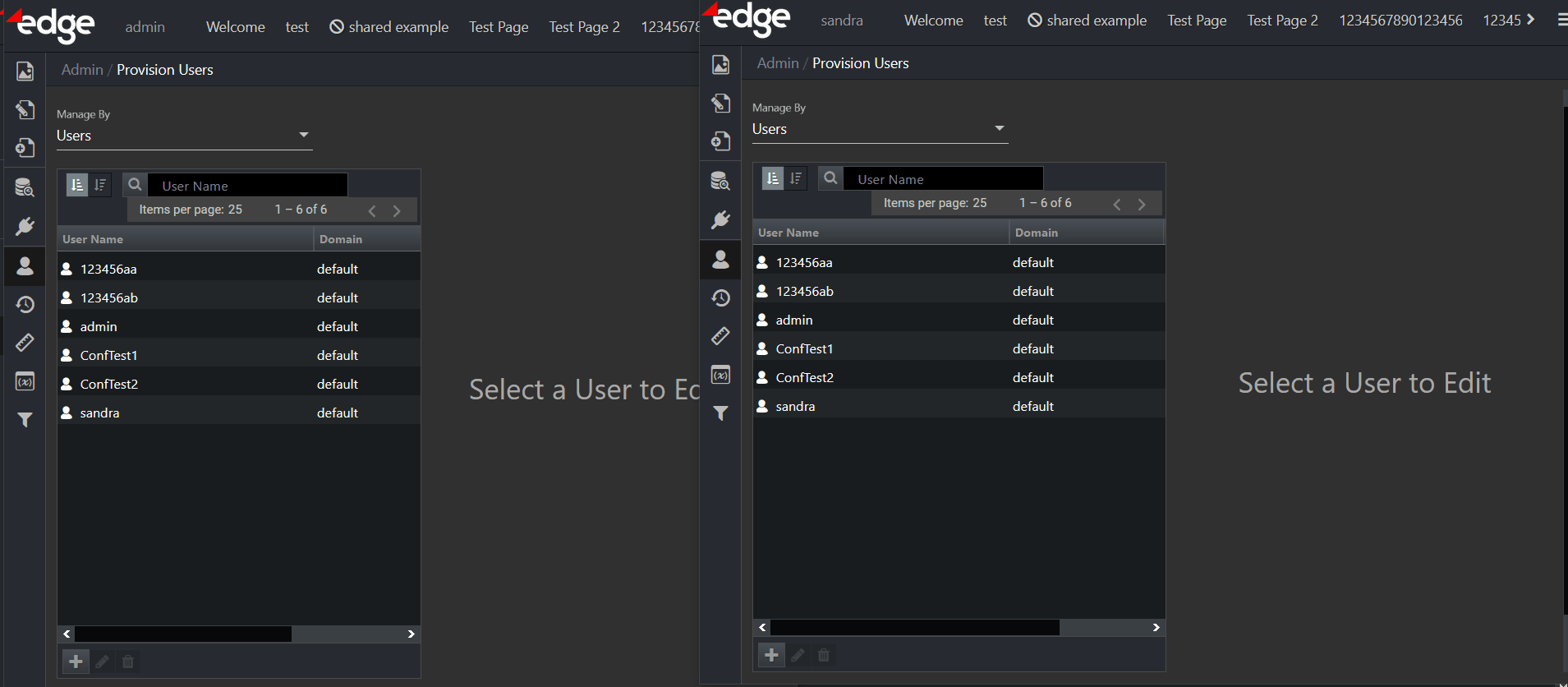
Example 9: Pipeline
If you add a new connection or a node to the pipeline on one instance, the pipeline will automatically be updated on all other instances.
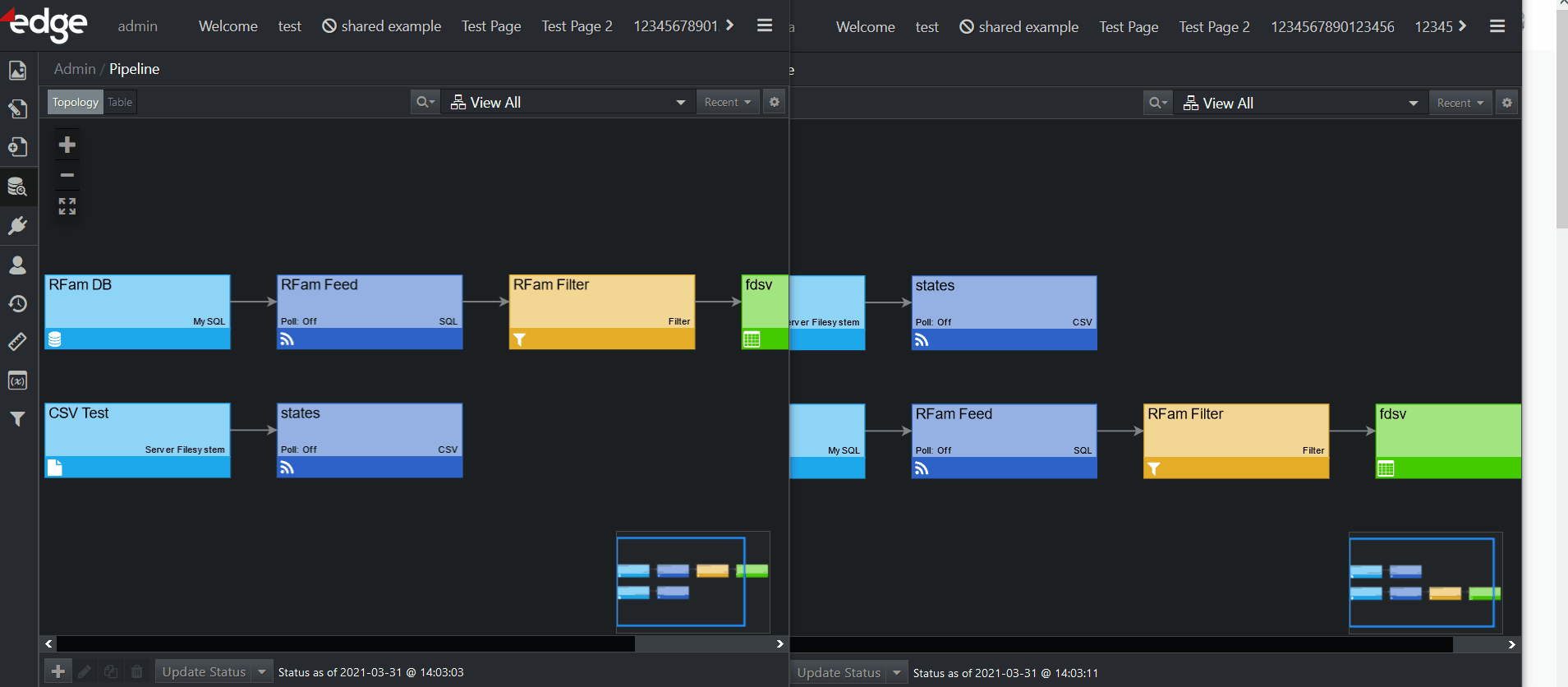
Please note that if two users are simultaneously editing a node, and both eventually save their changes, it is the second one’s changes that will apply – the first one gets overwritten.
